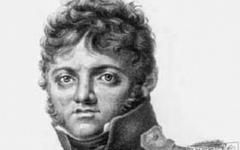Dear visitors! Below you will find teaching aids in English for children using the method of V.N. Meshcheryakova “I love English”. I work with these CDs and books in class.
The English language manual for children from 3 to 6 years old is the zero level in the “I love English” educational set and consists of a disk and a coloring book. At the end of the manual methodological recommendations, translation of song lyrics (for parents) and a dictionary (also for parents). At this level, children learn to perceive English speech by ear, follow the teacher’s commands, play and sing songs in English. Classes are conducted in the music game form.

The English language guide for children aged 4 to 7 years is a continuation of the zero level in the “I love English” educational set and consists of a disk and a colorful book for the child. At the beginning of the book there is a dictionary (for parents), and at the end there is the text of audio lessons in English. At the end of each academic semester, you can stage musicals with your children in English, the scripts of which are given in the teacher’s manual.

The English language guide for children aged 5 to 7 years is the 1st step in the “I love English” educational set and consists of a disk, a book with audio lessons and workbook. Children continue to develop their listening skills and begin to speak English, using approximately 250 words and 40 colloquial phrases. Over the course of a year, children learn 30 songs and rhymes. Children also develop communication skills, activity and independence.
 The English language guide for children aged 6-10 years is the 2nd stage in the “I love English” educational set and consists of a disk, a book with audio lessons and a reading book. Children continue to improve their listening and communication skills in English and begin to learn to read using the original technology of color reading in a familiar language. linguistic material, studied at previous levels. Children learn to read English with ease.
The English language guide for children aged 6-10 years is the 2nd stage in the “I love English” educational set and consists of a disk, a book with audio lessons and a reading book. Children continue to improve their listening and communication skills in English and begin to learn to read using the original technology of color reading in a familiar language. linguistic material, studied at previous levels. Children learn to read English with ease.
 The set consists of a reading book, a workbook with board game and a disk with very beautiful songs and well-read fairy tales. The book was created on lexical material, acquired by children at the stages “I can speak” and “I can read”. This book develops the reader's curiosity, the ability to think, compare with personal experience and form your own own opinion about what you read. At the end of the book there is a script for the musical.
The set consists of a reading book, a workbook with board game and a disk with very beautiful songs and well-read fairy tales. The book was created on lexical material, acquired by children at the stages “I can speak” and “I can read”. This book develops the reader's curiosity, the ability to think, compare with personal experience and form your own own opinion about what you read. At the end of the book there is a script for the musical.
 The English language manual for children aged 7-11 years is the 3rd stage in the “I love English” educational set and consists of a disk, a textbook and a workbook. At this stage, children learn the basics of writing in English and, of course, continue to work with listening, colloquial speech and reading. The audio lessons of this level include large number new grammatical structures.
The English language manual for children aged 7-11 years is the 3rd stage in the “I love English” educational set and consists of a disk, a textbook and a workbook. At this stage, children learn the basics of writing in English and, of course, continue to work with listening, colloquial speech and reading. The audio lessons of this level include large number new grammatical structures.
 The set consists of a reading book and a disk. This book combines entertaining texts with interesting tasks, where new vocabulary is presented using the technique of color reading. Reading and writing in this book are aimed at developing critical thinking. At the end of the book you will find a dictionary and a script for a musical that you can stage with your children at the end of the school year.
The set consists of a reading book and a disk. This book combines entertaining texts with interesting tasks, where new vocabulary is presented using the technique of color reading. Reading and writing in this book are aimed at developing critical thinking. At the end of the book you will find a dictionary and a script for a musical that you can stage with your children at the end of the school year.
For each stage of teaching children English there are teaching aids for teachers and visual aids.
You can get acquainted with the methodology, benefits, and also find out their cost in more detail.
ORGANIZATIONAL FORM
IP Goncharova Olga Viktorovna is the official distributor in the Russian Federation and foreign countries methods of Valeria Meshcheryakova "I Love English", operating on the basis of the main distribution agreement between individual entrepreneur V.N. Meshcheryakova. - producer of original methodological and teaching aids in English on the one hand and individual entrepreneur O.V. Goncharova. . - the distributor, on the other hand.
The organizational and legal form of the store is IP Goncharova O.V. Certificate No. 311169025200012 dated September 9, 2011
Director of the store and methodological center - Olga Viktorovna Goncharova
The website www.eng-shop.ru presents Valeria Meshcheryakova’s original educational and methodological manuals for teaching preschool and younger children school age English language, the author's courses on preparing teachers to work with children using these manuals, as well as books and teaching aids by other authors, which are created as additional material for classes with children using the methods of Valeria Meshcheryakova.
ABOUT VALERIYA MESHCHERYAKOVA’S METHODOLOGY I LOVE ENGLISH
Valeria Meshcheryakova’s technique has been developing since 1994. It began with individual tapes that the author recorded daily for his students, and now the I LOVE ENGLISH method of teaching children English is the most popular and effective in the educational services market.
The technique appeared on the market in the form of manual sets in 1998. Gradually developing, the technique became more and more in demand. A clear structure and methods of working with children, worked out in practice by the author himself, gave excellent results and this could not escape the attention of teachers and parents. The effectiveness of the technique is manifested in a specific indicator: children begin to speak fluently within a guaranteed time frame and in a guaranteed volume. Naturally, as in all other processes, a guarantee of results can only be achieved with 100% compliance with the methodological principles and rules for organizing the process, which teachers master in V.N.’s proprietary courses. Meshcheryakova.
Active promotion of the methodology began in 2004 after the organization of the Methodological Center by Valeria Meshcheryakova in Moscow (organizer and head of the Center Olga Viktorovna Goncharova)
POSITIVE AND DISTINGUISHING FEATURES OF V.N.’S METHOD MESHCHERYAKOVA
Parents are freed from time-consuming attempts to help their children “do their homework” - you simply turn on the disk for 10-15 minutes every day. You don't need to do anything else. If you don't know English language– this is not a hindrance, but an opportunity to start studying it with your child.
Teachers acquire a very effective and convenient technique. Clearly structured material presented in manuals and the presence of a set of visual aids frees the teacher from the routine work of writing lesson plans and selecting additional materials. The kits have EVERYTHING! The teacher can focus solely on creative work and enjoy teaching as much as the children!
As a result, the teacher receives English-speaking children in a short time. For parents, this is the most powerful motivation to turn to you, as an English teacher, regarding the issue of effectively teaching their children English.
Children will not be afraid to speak in English, but they will do it with pleasure. When attending English using Valeria Meshcheryakova’s method, children receive 100% positive emotional charge, as if they were attending an exciting entertainment event. Joyful activities for children are the health of your children - mental and physical
Managers (organizers, administrators, investors) of children's centers.
Availability in your educational institution teachers who know the methods of teaching children English according to V.N. Meshcheryakova. - a strong motivational factor for parents to invest in your language center (school, group).
Who contacts us:
Teachers of children's centers and language courses.
Future and present organizers of modern children's centers, where the most important thing is not to earn money, but to provide quality services, for which they will receive gratitude from parents in the form of good payment.
Parents who understand the importance of quality education and development of children early stages. By purchasing our original manuals, they not only thank the author and our entire team for creating a highly effective product, but thereby provide support for further development.
Distribution of the methodology:
Our benefits are used by children throughout Russia, the Baltic states, Belarus, Kazakhstan and Ukraine.
Plans for the future.
Release of audio courses on other foreign languages. Already now you can get acquainted with experimental textbooks on French and German languages. A Spanish manual is expected to be released. In development - Japanese.
Release of additional training and methodological manuals both original and created by teachers working according to the methodology of Valeria Meshcheryakova.
Expanding the geography of representative offices of the methodology.
Master classes on the methodology for teachers and parents.
Video presentations and programs in support of teachers working according to the methodology and for parents.
Hardly anyone now doubts that knowledge of English is an absolute necessity for any intellectual high paying job, and business today is almost impossible without contacts with foreign partners, and English is the main language of international communication. In this case, it is especially important to be able to understand native speakers and conduct a full dialogue with them. And few of us can boast of this skill. But we studied the language at school for many years, starting from the 5th grade, and some from the first grades of gymnasiums and special schools, and then continued to learn it for 6 years at the institute. And yet the need to talk with foreigners drives many into a stupor and causes great fear. Why is this happening?
Valeria Meshcheryakova spent more than 20 years of her life creating her unique method of teaching English. She managed to figure out how our school creates a language barrier for children and find a way to teach the language in such a way that the child does not have any barriers, and he learns a foreign language just like his native one.
Meshcheryakova’s technique is suitable for children from 3 to 10 years old and uses the imprinting mechanism, when language structures are imprinted in the child’s mind without significant effort on the part of the child, without tedious cramming and without stress.
This mechanism works best in children in early childhood and fades away after 8-9 years. This is why it is important to start learning foreign languages as early as possible.
 Training using Valeria Meshcheryakova’s method is based on the principle of deep immersion:
Training using Valeria Meshcheryakova’s method is based on the principle of deep immersion:
— lessons are taught only in English;
- learning is built in the form of a game - for children this is not an activity, but an exciting performance in which they act as the main actors;
— a lot of audio materials recorded by native speakers are used;
— Parents also take part in the training.
Gradually, in the process of such classes, children begin to speak and think freely in the language and, ultimately, master English as their native language.
For each age group A separate level of language teaching is applied.
Stage 0: “I can sing”— English for children from 3 to 5 years old. Children learn to perceive English by ear, follow the teacher's commands, play and sing songs in English.
Stage 1: “I can speak”- for children from 5 to 7 years old. Children acquire English speaking skills. Vocabulary grows to 500 units.
Stage 3: “I can write”- for children from 8 to 9 years old. Children learn to write in English and construct sentences grammatically correctly.
Stage 4: “I can analyze”- for children from 9 to 10 years old. Children develop the skill of analyzing oral and written language material.
The number of children in the group is 5-6 people.
Classes are held 2 times a week, duration is from 30 to 45 minutes depending on the age of the child.
Welcome to classes at the center early development"April"!
The English language guide for children from 3 to 6 years old is the zero level in the “I love English” educational set and consists of a disk and a coloring book. At the end of the manual, methodological recommendations, translations of song lyrics (for parents) and a dictionary (also for parents) are given. At this level, children learn to perceive English speech by ear, follow the teacher’s commands, play and sing songs in English. Classes are conducted in the form of music and games.
"I can sing"- musicals, author - V.N. Meshcheryakova

The English language guide for children aged 4 to 7 years is a continuation of the zero level in the “I love English” educational set and consists of a disk and a colorful book for the child. At the beginning of the book there is a dictionary (for parents), and at the end there is the text of audio lessons in English. At the end of each academic semester, you can stage musicals with your children in English, the scripts of which are given in the teacher’s manual.
"I can speak", author - V.N. Meshcheryakova

The English language manual for children aged 5 to 7 years is the 1st stage in the “I love English” educational set and consists of a disk, a book with audio lessons and a workbook. Children continue to develop their listening skills and begin to speak English, using approximately 250 words and 40 colloquial phrases. Over the course of a year, children learn 30 songs and rhymes. Children also develop communication skills, activity and independence.
"I can read", author - V.N. Meshcheryakova

The English language guide for children aged 6-10 years is the 2nd stage in the “I love English” educational set and consists of a disk, a book with audio lessons and a reading book. Children continue to improve their listening and communication skills in English and begin to learn to read using the original color reading technology on familiar language material studied at previous levels. Children learn to read English with ease.
"Clumsy and Gracie", author - N.A. Poddubnaya

The set consists of a reading book, a workbook with a board game and a CD with very beautiful songs and well-read fairy tales. The book was created on the lexical material acquired by children at the “I can speak” and “I can read” stages. This book develops the reader's curiosity, the ability to think, compare with personal experience and form your own opinion about what you read. At the end of the book there is a script for the musical.
"I can write", author - V.N. Meshcheryakova

The English language manual for children aged 7-11 years is the 3rd stage in the “I love English” educational set and consists of a disk, a textbook and a workbook. At this stage, children learn the basics of writing in English and, of course, continue to work with listening, speaking and reading. The audio lessons at this level contain a large number of new grammatical structures.
, author - N.A. Poddubnaya

The set consists of a reading book and a disk. This book combines entertaining texts with interesting tasks where new vocabulary is presented using color reading techniques. The reading and writing in this book are aimed at developing critical thinking. At the end of the book you will find a dictionary and a script for a musical that you can perform with your children at the end of the school year.
Information for parents
Information for teachers
Features of the I LOVE ENGLISH method
Features of V.N. Meshcheryakova’s technique. According to school curriculum Teaching foreign languages begins at school, i.e. at the age of 6-7 years. And it is well known that best time to begin studying them is the age when the imprinting mechanism is still active, i.e. preschool age. It is at this time that learning a foreign language can take place in the most natural way, through play activity, and the knowledge acquired and practiced during this time remains for life.
Particularly relevant is early teaching of listening, from which speech training in general should begin. Unfortunately, in most programs offered, listening is given a secondary role, and many students simply ignore these tasks. Effective training listening skills of live, fluent English on CDs, as well as in the teacher’s speech when immersing preschoolers in language environment during the lesson it is possible if the teacher uses the I LOVE ENGLISH manuals. When creating them
Took into account the interests of children of this age (audio materials are musical and playful in nature);
- used native speakers from different countries(UK, USA, Australia);
- adhered to the principle of transferring the goal to the process (tasks are designed in such a way that English is a means for completing some other task);
- took into account the opportunity for parents to participate in the learning process (the manuals include “Notes for Parents”).
A side effect of early listening learning is that children begin to speak English early and a lot. Thus, speaking is a natural consequence of children repeatedly listening to interesting audio lessons, and not the result of tedious drills. One of the clear advantages of such teaching of speaking is the fact that children who begin to speak after a long stage of listening (which is as close as possible to the natural path in language acquisition) do not need to produce English sounds. They immediately have good pronunciation and often begin to think in language before they even begin to speak.
The next stage of learning using the I LOVE ENGLISH manuals is functional reading, i.e. reading with information extraction. Children learn to read only from well-known language material. It is also not an end in itself, but a way to complete other tasks. Practice shows that children learn to read not by rules, but by analogy. Therefore, to optimize the process of learning to read, we offer color reading technology, described in detail in the third part of the manual.
Children begin to master writing simultaneously with the process of mastering reading. However traditional forms Knowledge control, such as dictations, is unacceptable at this age. The foundations of writing are laid in a playful way. Children solve crossword puzzles, make words from letters, etc.
Description of methodological principles according to the author's methodology for teaching English to children by Valeria Meshcheryakova.
Currently, interest in foreign languages and, in particular, in English has increased significantly. Many adults, having realized in practice how difficult it is to master a foreign language in adulthood, are looking for an opportunity to give their child the basics foreign language speech at a time when his brain still has the ability to imprint entire blocks of language into memory.
Our task is to create in the child’s brain an image of the basic structures of language. Since in at this age speech mechanisms have not yet been fully formed, and the imprinting mechanism is at work; the most effective way seems to be the natural way of creating an image of language in a child - through repeated listening to the structures being practiced (the audio complex plays a major role in this). When developing the program, we took into account the psychophysiological characteristics of children.
First of all, we focused on the involuntary nature of memory and attention, the ability to imprint, and play as the main activity. Based on analysis age characteristics We have formulated the following methodological principles.
1. The principle of comfort;
2. Immersion in the language environment;
3. The general development of the child through a foreign language, the disclosure of his creative abilities;
The natural path to language acquisition;
Minimax principle;
The principle of activating the main channels of perception.
In our opinion, most of the principles echo the concept of education by O.A. Kurevina - L.G. Peterson. "Education concept: modern look" Let's take a closer look at them.
1. The principle of comfort.
The more comfortable the conditions in the lesson, the more intense the acquisition of foreign language speech. Any stressful situation can destroy the child’s desire to communicate with you, and therefore, there will be no need for him to use speech. In order for children to feel comfortable in class, they must: not get tired; be relaxed; stay interested. To ensure that children do not get tired throughout the lesson, they need active activity and a frequent change of games and tasks. When conducting classes, we strongly recommend that children sit not at desks, but on chairs arranged in a semicircle in free space. This allows children to freely stand up during class to participate in outdoor games.
(For example: Unit I, lesson 3-1, paragraph 8 - see information in the manual Unit II, lesson 4-2, paragraph 4 - children act out a dialogue, see information in the manual).
In addition to games, each lesson includes 2-3 breaks - warm-ups.
(For example: Unit I, lesson 1-3, paragraphs 4,8,11)
When reciting poems and singing songs, you should accompany them with movements.
(Unit I, lesson 1-2 – song This is a bear...)
Or at least gestures
(for example: Unit I, lesson 3-1 - rhyme Rain).
Considering the fact that in most children at this age involuntary attention prevails over voluntary attention, we consider it advisable to frequently change types of activities. This makes the lessons as rich as possible and gives the teacher the opportunity to concentrate directly on educational process without being distracted by restoring discipline. A change in activity is considered not only the transition from sitting to active games and vice versa, but also the alternation of various tasks and demonstration material.
On average, each lesson consists of 12 – 16 points. With a lesson duration of 40 - 45 minutes, this means changing activities every 2-3 minutes. However, starting from the involuntary nature of children’s attention, we pay great attention to developing the ability to concentrate it. This is facilitated by the presence in the program large number educational games.
For example: Unit I, see information in the manual
Rule #1. Speak only English! At the very first lessons, this rule must be stated: “Guys! In English class we must speak only English! Sometimes I will be allowed to switch to Russian, but no more than for one minute. And if you want to say something in Russian, come to me after class, I’ll listen to you.” Later, this rule is reminded periodically if necessary: “Don’t speak Russian!”, “This is the English lesson!” Don’t speak Russian at the English lesson!”, “If you want to speak Russian, speak Russian after classes!” Practice shows that by the 3rd school week, communication in Russian practically disappears, and by the end of the first quarter, most children have a psychological ban on speaking Russian in class, which stimulates the need to express thoughts in English.
Rule #2. The driver commands! As a rule, this is a teacher, but if you are playing school and have already said the phrase: “I’m not the teacher!” I'm a little girl! You are the teacher now!”, sit like a mouse and pretend to be a student. There cannot be two drivers in the game! From this moment on, the problem of continuing the game rests entirely on the shoulders of the new driver-student in the role of teacher. The only right you have is... see information in the manual
Rule #3. Don't take long pauses. Children cannot stand emptiness, and if there is a pause in the lesson, they will definitely fill it with themselves. If a child does not answer a question immediately, you should not persuade him to “think about it.” The teacher must use a series of leading questions to find out what exactly caused the child difficulty in answering (see “ladder of knowledge”), and if he still cannot “talk” to him, it is better to turn to other children or give the correct answer himself.
Rule #4. Voluntary participation in the game. Getting a child to play is just as difficult as getting him to study. The teacher should remember that interest in the game can be maintained only if a positive emotional background is maintained in the lesson. How can you get children to obey the rules and follow you closely throughout the entire learning cycle? To do this, you need to know what motives are the source of activity and interest of students. We identify 6 main motives that can intensify the activities of students in this age group. see information in manual 2.
Immersion in the language environment. Kurevina-Peterson’s principle of activity involves the child’s “discovery” of new knowledge. The main activity of a child in foreign language lessons is speech activity. Therefore, we can say that when teaching foreign languages, the “discovery of new knowledge” refers to the ability to achieve mutual understanding by means other than native speech. Each new act of mutual understanding can be regarded as a “discovery.” Only immersion in a language environment, up to a complete ban on the use of their native language, can stimulate children to make these discoveries.
Starting from 3rd school week Lessons are taught almost entirely in English, with the exception of those few moments when the use of the native language helps to create the necessary emotional tension (for example: Unit II lesson 7-3 - see information in the manual). Remember that for children you are a native speaker. In order for a child to have a desire to talk to you, you need to let him understand that you are primarily concerned not with the form of the statement, but with your mutual understanding with him. For example, if a child answers the question: “What’s there on the table?” , answers briefly: “A bear!”, be sure to express your approval with a nod of the head, a smile or a short “Yes!” After all, the main thing (!) is that he understood your question and, by the way, answered it correctly (in a brief form). There was an understanding! Focus on this, but after that be sure to give the full correct answer: “There is a bear on the table!” Non-translational semantization contributes to creating an atmosphere of complete mutual understanding in the classroom.
The teacher must remember that translating from one language to another makes it difficult to create an image of the language and slows down the child’s reaction. We offer the following methods of translation-free semantization: see the information in the “Ladder of Knowledge” manual. Let us consider the problem of mutual understanding schematically. Complete mutual understanding occurs if the question is accepted and the response to it is adequate. In this case, the student and the teacher are, as it were, on the same rung of the ladder of knowledge (Fig. 1).
Now imagine that the teacher does not receive an answer to his question. This suggests that the child has not yet reached the level at which the teacher expected to see him (Fig. 2) and the teacher needs to go down a certain number of steps to achieve mutual understanding. And here the teacher is tempted to slide down to the very bottom of the ladder - phonetic practice, i.e. simply invite the child to repeat the correct option (Fig. 3).








